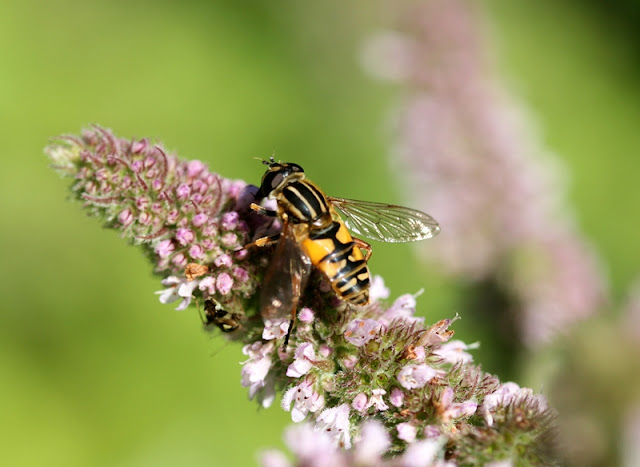Staveley NR a Yorkshire Wildlife Trust reserve is a superb wetland area, recovered from quarrying that finished in the 1980's and has been managed to offer some rare habitat, and the best thing about it is that it is close to home.
Over the East lagoon I was greeted by a Hobby being chased by a Black-headed Gull. There were many Chiffchaff and a small number of Blackcap calling, and a Redpoll flew over calling. Dragonflies were about in small numbers: Common Hawkers, a couple of Brown Hawker, 25+ Common Darters and several Coenagrion sp. which were too far away to see properly.
 |
| Common Darter Sympetrum striolatum |
A ladybird seen turned out to be a Harlequin Harmonia axyridis, a species that was first recorded in Britain in 2004 and has spread rapidly north and west. There are a few extra-limital records further north and in Scotland but Yorkshire is currently at the northern edge of the main range.
 |
| Harlequin Ladybird Harmonia axyridis |
As for butterflies, they were attracted to the blueish globe flowers of Field Scabious in the meadow areas, and included just the one Red Admiral, several Peacock, c.20 Small Tortoiseshell, three Speckled Brown and a Small Copper, while moths were represented by two Udea lutealis and eight Silver Y.
 |
| Peacock |
 |
| Red Admiral |
 |
| Red Admiral |
 |
| Red Admiral |
 |
| Small Copper |
Continuing on from last week I had a go at photographing some of the hoverflies and associated species. One big black beastie stood out with large size and black bristles on the thorax, which reminded me of the tachinid of last week, and was found to be Tachina grossa, and looking at the state of its wings it was amazing it could fly; a more complete one was seen nearby.
 |
| Tachina grossa |
 |
| Tachina grossa |
 |
| Tachina grossa |
The number and variety of hoverflies was not as good as last week, but those identified are added here.
 |
| Helophilus pendulus |
 |
| Syrphus sp |

 |
| Eristalis pertinax |





























